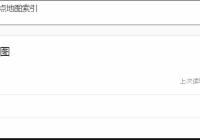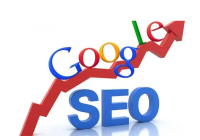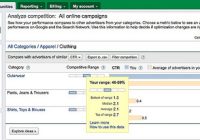Category Archives: google
谷歌sitemap站点地图 无法获取,怎么解决
谷歌seo应该注意的几个重点
Google AdWords发布新功能 可分析对手投放水平
Google AdWords 刚刚发布了一项新功能──竞争分析(Analyze Competition),通过 Analyze Competition,广告商可对比自己和其它竞争对手的广告投放差异,比如,将自己的投放情况和所处行业的平均水平进行比较,或者寻找投放情况类似的竞争广告商。
Analyze Competition 可使用的对比数据包括展现率(Impressions)、点击率(CTR)和平均广告排名(Average Position)。当然,Google 并没有直接公开这些核心指标,而且通过机器识别算法将所有广告商分到了 7000 个类别之中,每个类别中的数据都是经过了匿名化处理的,Analyze Competition 提供的是你和竞争对手的差距比例值,比如,比电子商务类网站广告的平均展现率低了 20%,而无法提供具体、真实的数据值。
Analyze Competition 的出现,或许会讨公司的高管喜欢,到底是预算优先还是 ROI 优先?反正领导都不太明白,那我们来谈谈到底到做到行业中什么水平吧。
从功能上看,除了是一个竞争情报系统之外,Analyze Competition 可发挥的空间应该还很大,比如 Analyze Competition 中的各种 Performance 指标最终可以和 AdWords 的自动优化功能挂钩起来的话,那 AdWords 的管理工作将进一步自动化和傻瓜化。
目前 Analyze Competition 现在还处于 Beta 版,在中国版的 AdWords 里更是连影子都看不到。
2010年Matt Cutts的SEO建议(文字稿)
在Google I/O 2010的一场session里,Matt Cutts给出了网站建设中的一些SEO建议,之前我们上传了视频,这里我们整理一下他说了些什么?下面我们归纳的一些重点,在文章的末尾,你可以下载整篇会议文字记录(英文)。
总的来说,Matt Cutts反复强调网页中文字的重要性,无论是title meta tag还是description meta tag,关于这点,你可以重温之前文章:网页页面搜索引擎优化和关键字定位指南。
下面是整理的文章要点:
标题标签(title meta tag)
这个标签在整个会议过程中被多次提起,可想而知它是多么重要,其中提到的有几点:
视频:Google I/O 2010 – Matt Cutts给网站建设的SEO建议
![]() Matt Cutts 以几个网站为实例,给出网站建设中需要注意的一些SEO建议,并在最后回答了现场和直播Wave中的一些问题。
Matt Cutts 以几个网站为实例,给出网站建设中需要注意的一些SEO建议,并在最后回答了现场和直播Wave中的一些问题。
原视频在youtube上,看不了,上传到Youku上了。
视频中主持会议的是:Matt Cutts(Google反Web Spam的头)
其他演讲台就坐的有: Greg Grothaus, Tiffany Lane(Matt Cutts团队成员)和 Vanessa Fox(前Googler,曾经是Google Webmaster Central的产品经理)
下面是视频:
百度竞价排名 VS Google Adwords
许多博客上的朋友及我的一些客户都会经常问到我一个问题,到底是百度竞价排名效果好,还是Google Adwords广告效果要好? 如果从平台的可用性及可操作性角度靠考虑,当然是Google Adwords更具优势;如果从广告效果的角度来说,那就不好下定论了,这取决于您的客户群体上网行为及搜索行为习惯。

Google确认“Mayday”更新影响网站的长尾词流量
原文网址:http://searchengineland.com/google-confirms-mayday-update-impacts-long-tail-traffic-43054
Google的Matt Cutts确认Google五月份改变了网站/关键词排名的策略。 内页的权重不如以前好,如果你内页的外链很少的话。这种情况影响网站的长尾关键词的排名和流量,即使你是大型网站也不能避免。
I asked Google for more specifics and they told me that it was a rankings change, not a crawling or indexing change, which seems to imply that sites getting less traffic still have their pages indexed, but some of those pages are no longer ranking as highly as before. Based on Matt’s comment, this change impacts “long tail” traffic, which generally is from longer queries that few people search for individually, but in aggregate can provide a large percentage of traffic
这个改变主要影响那些非常大的网站,这些网站通常利用网站结构,标签等,但是他们并没有多少导入链接。
This change seems to have primarily impacted very large sites with “item” pages that don’t have many individual links into them, might be several clicks from the home page, and may not have substantial unique and value-added content on them. For instance, ecommerce sites often have this structure. The individual product pages are unlikely to attract external links and the majority of the content may be imported from a manufacturer database. Of course, as with any change that results in a traffic hit for some sites, other sites experience the opposite. Based on Matt’s comment at Google I/O, the pages that are now ranking well for these long tail queries are from “higher quality” sites (or perhaps are “higher quality” pages).



